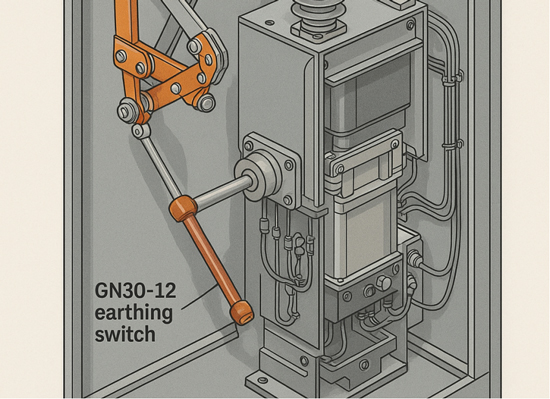In high- and medium-voltage systems, earthing switches are essential components designed to safely discharge residual energy during maintenance or isolation procedures. With increasing attention on operator safety, mechanical reliability, and integration with switchgear, the role of a well-designed earthing switch has never been more critical.

An earthing switch is used to ground a disconnected part of an electrical system, protecting personnel and equipment from induced voltages or accidental energization. It is commonly integrated into metal-enclosed switchgear or installed as a standalone unit in substations.
When maintenance is required on a section of the system, the earthing switch is closed after isolating the section from live circuits—providing visible, mechanical grounding.
The two most common types of earthing switches used in 12–40.5kV systems include:
Single-shaft rotary earthing switch – Compact, simple, and easy to integrate into vacuum circuit breaker panels.
Three-pole side operating type – Suited for AIS/GIS with large current requirements and robust short-circuit withstand.
Key users often look for:
·Mechanical endurance over 2000 operations
·Short-circuit withstand levels above 25kA
·Interlock compatibility to prevent incorrect operation
·Visible earthing indication
A widely used model in compact switchgear assemblies is the GN30-12 type rotary earthing switch, favored for its small footprint and high operational reliability.
When choosing an earthing switch, focus on:
·Voltage and current ratings (match to system needs)
·Installation method (cabinet integrated or wall-mounted)
·Interlocking mechanism (manual or automatic)
·Short-time withstand current and duration
·Environmental sealing if used outdoors
Avoid over-specifying features unless the application calls for extreme conditions. The goal is to achieve safe discharging, stable mechanical performance, and seamless integration with surrounding switchgear.
·Ring Main Units (RMUs)
·Primary substations (AIS/GIS)
·Distribution cabinets
·Industrial power centers
In modern smart grids, earthing switches may also support remote status monitoring, though mechanical reliability remains the top concern in most markets.